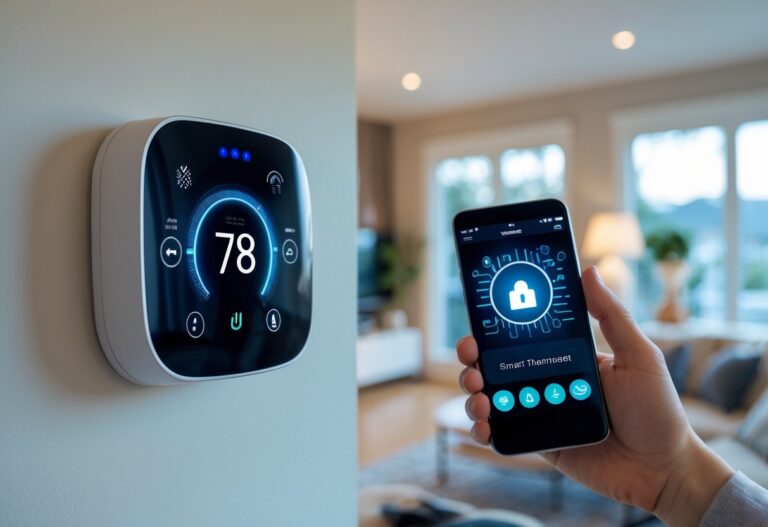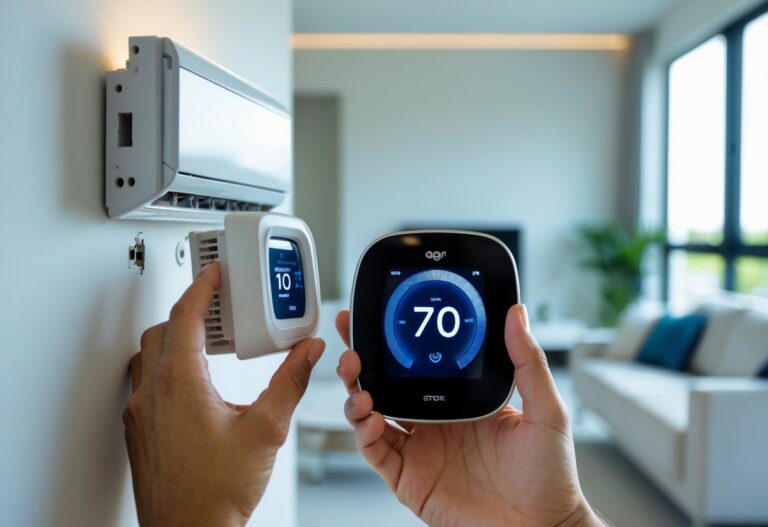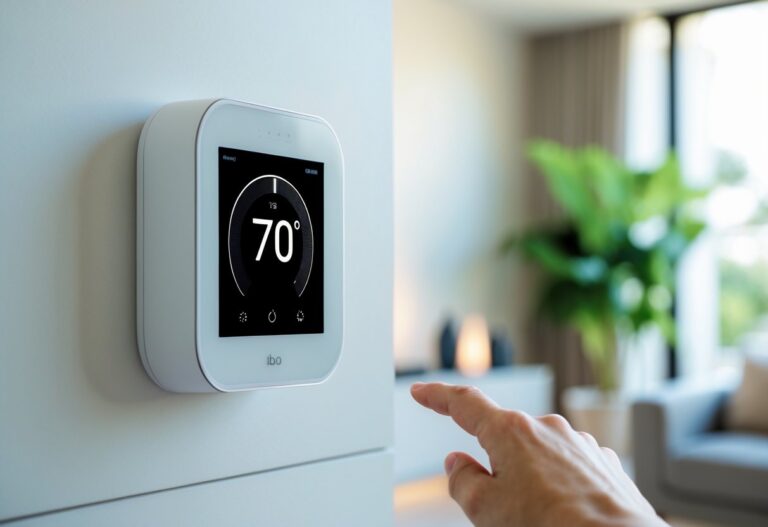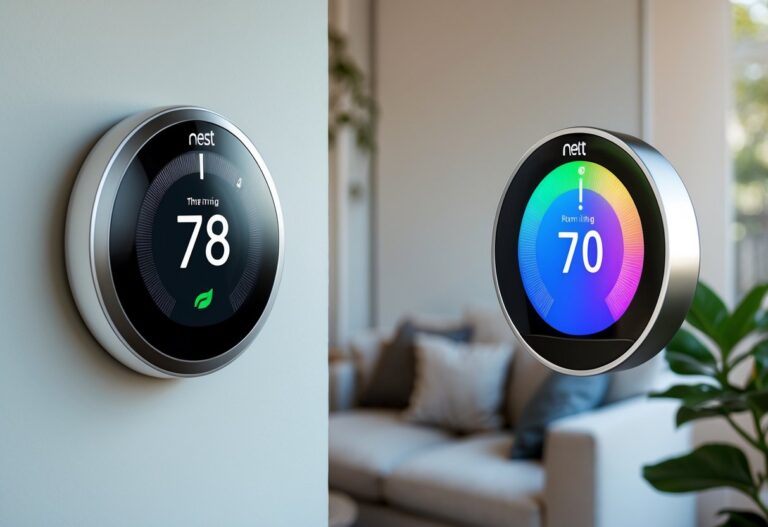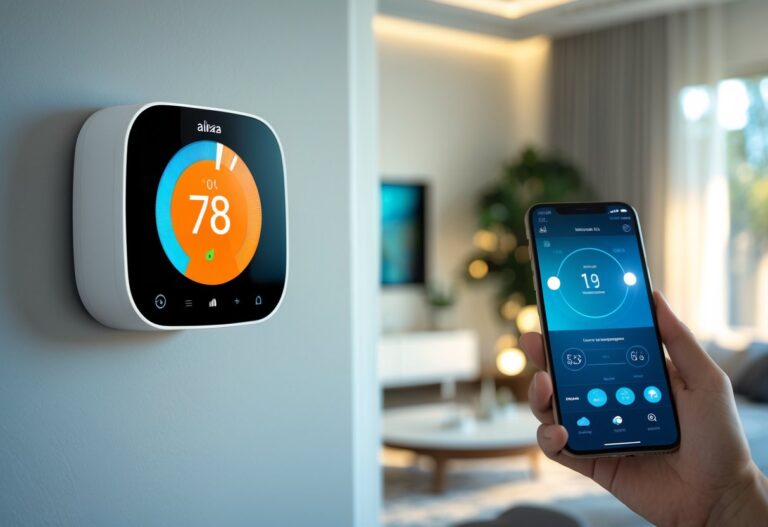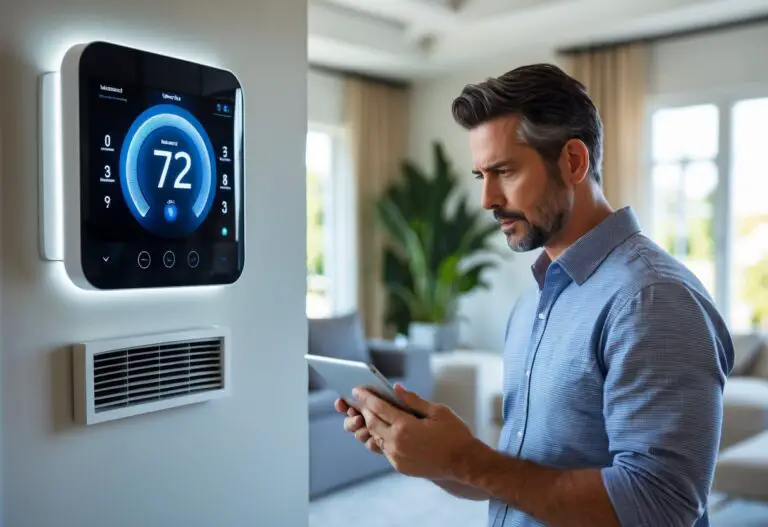If you’ve ever wondered whether your smart thermostat can switch between heating and cooling on its own, you’re not alone. Managing your home’s temperature without constant adjustments can make life a lot easier—especially when the weather keeps changing. Most smart thermostats can automatically switch between heat and cool modes based on the temperature you set, keeping your home comfortable without extra work.
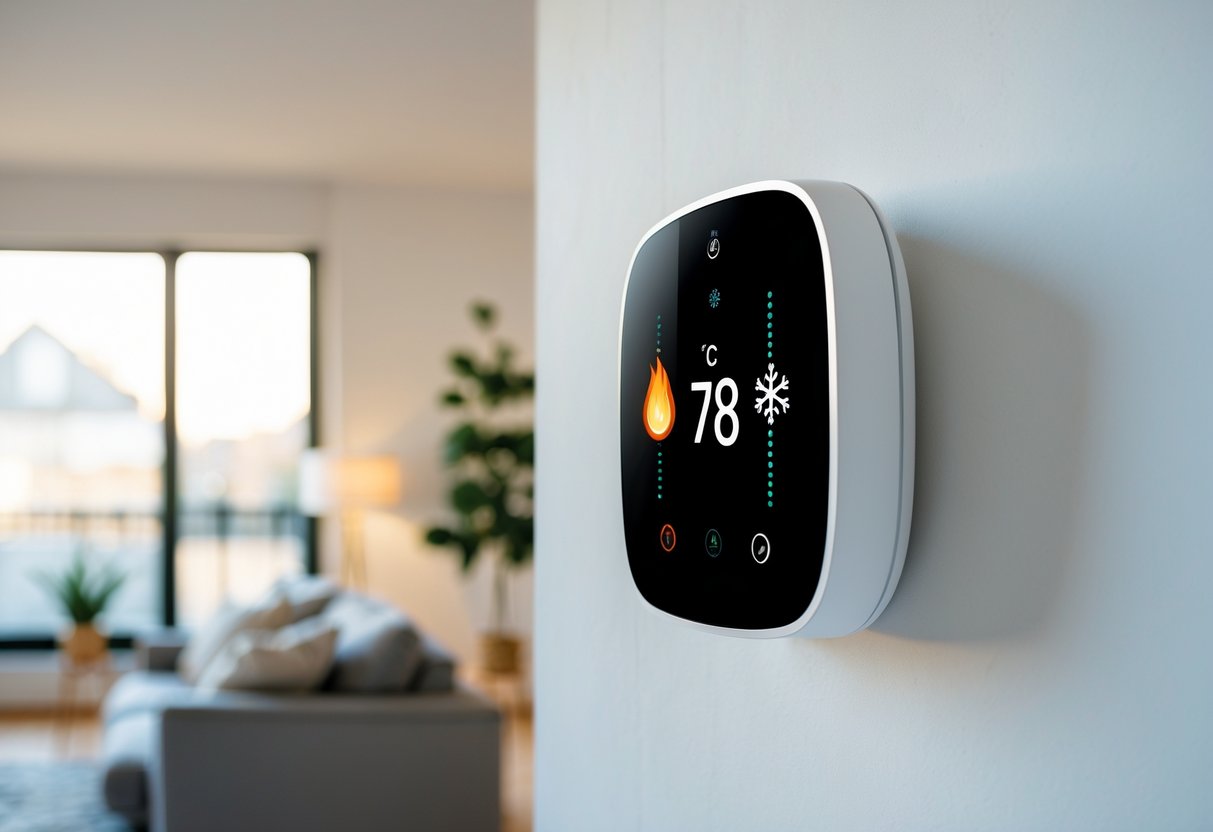
This ability means less hassle for you, as your thermostat responds to both drops and spikes in temperature, often without you even noticing the change. Switching modes automatically is a standard feature in many popular models, and learning how it works can help you get more from your smart thermostat.
Key Takeaways
- Smart thermostats can switch between heating and cooling automatically.
- Understanding different settings helps you get the most from your device.
- Major brands offer features that add convenience and comfort for your home.
How Smart Thermostats Switch Between Heat and Cool
Smart thermostats can keep your home comfortable by changing from heating to cooling as needed. You can let the thermostat handle this automatically, or you can change modes yourself if you want more control.
Automatic Changeover Functionality
Many modern smart thermostats include an automatic changeover feature. With this, the thermostat switches between heat and cool mode based on your set temperature range.
For example, you can set a lower temperature for heat and a higher one for cooling. If the room temperature drops below your heat set point, the thermostat turns on the heater. If it goes above your cooling set point, the thermostat turns on the air conditioning automatically.
Some brands, like Nest, Honeywell, and Ecobee, have this feature. You may see it called “auto” mode or “auto changeover” in the menu. This is helpful in places with large temperature swings during the day and night.
Before using this feature, make sure your system supports automatic changeover. Some thermostats need you to enable the function in the settings menu.
Benefits:
- No need to switch heating and cooling modes manually
- Helps keep your home comfortable
- Good for areas with unpredictable weather
Manual Switching Process
If your thermostat does not offer automatic changeover, you can still switch between heat and cool mode manually. This means you pick the mode you want—either heating or cooling—and change it yourself as needed.
Manual switching is usually done using the thermostat’s touchscreen, buttons, or smartphone app. To switch, select either “Heat” or “Cool” mode on the main screen or control option.
This process is straightforward, but you must remember to change modes as weather conditions shift. Some people prefer manual control because it lets them decide exactly when to switch.
Tips for manual switching:
- Check the weather before choosing a mode
- Remember to switch back if temperatures change
- Double-check settings during the spring and fall
Heat-Cool Mode Operation
The “heat-cool” or “auto” mode lets you set both a heating and a cooling set point. The thermostat keeps your indoor temperature within this chosen range by switching between modes as needed.
For example:
| Heat Set Point | Cool Set Point | Result |
|---|---|---|
| 68°F | 74°F | Heats below 68°F, cools above 74°F |
You’re able to adjust these set points based on your preference for comfort and energy savings. Having enough space (often about 5°F) between the heat and cool set points avoids system conflicts and short cycling.
This mode is especially useful during seasons when nights are much cooler than daytime, like in the spring or fall. It helps prevent your home from getting too hot or cold without your input.
When using heat-cool mode, your thermostat works automatically, letting you set it and forget it.
Understanding Smart Thermostat Modes
Smart thermostats have several modes that help you keep your home comfortable and energy-efficient. Each mode is designed for a specific use and can impact how your heating and cooling system operates throughout the year.
Heat Mode Explained
In Heat Mode, your smart thermostat controls your heating system to keep your home warm. When the room temperature drops below your set point, the thermostat signals your heater or furnace to turn on. Once the desired temperature is reached, it will turn the heating system off.
You can set a specific temperature, and some models like the Nest thermostat can even learn your schedule. These smart thermostats usually use sensors to detect when the house is colder than your chosen setting.
Changing the settings is easy through an app or on the device itself. Heat Mode is useful in colder months or anytime the temperature in your home needs a boost to stay comfortable. Some thermostats allow you to adjust heat settings for different times of day.
Cool Mode Features
Cool Mode is built to manage your air conditioning. When you activate this mode, your smart thermostat turns on your AC as soon as the temperature inside climbs above your set point. This helps keep your rooms cool during hot days or warm seasons.
Smart thermostats, including models like Nest, can be programmed to maintain different temperatures at different times. Many devices use Auto scheduling to switch between cool and other modes based on your preferences or patterns.
You can adjust your cool mode settings from your smartphone, tablet, or computer. Some smart thermostats also consider outside weather, making sure the cooling system runs only when needed. This can help save electricity and improve comfort.
Off Mode Overview
In Off Mode, your smart thermostat will not run the heating or cooling system. The HVAC equipment stays off, no matter what the room temperature is. This mode is useful when you are away for long periods or when windows are open.
All settings remain saved, so you can turn the system back on without having to reset anything. Off Mode helps prevent wasted energy when you do not need climate control. It is a simple way to cut down on costs.
Some models, like the Nest thermostat, display the current temperature even when in Off Mode. Alerts or notifications can still be sent if the temperature goes too high or too low, depending on your settings. This ensures your system is ready when you need it again.
Popular Smart Thermostat Brands and Their Features
Top smart thermostats let you manage your home’s heating and cooling from your phone or with your voice. Some models automatically switch between heat and cool to keep your space at your chosen temperature.
Nest Thermostat Capabilities
The Nest thermostat is known for its Heat • Cool (Auto) mode. This feature allows you to set a temperature range, such as 68° to 75°F, rather than choosing one set temperature. The thermostat will then automatically run the furnace if it gets too cold or the air conditioner if it gets too hot.
Nest also supports scheduling, so you can set preferred temperature ranges at different times of the day. Its Auto-Schedule feature learns your routines over time and adjusts the temperature for you. Nest works with both Google Assistant and Alexa for voice control.
For homes with heating and cooling, Nest checks compatibility during setup. It also has safety settings to prevent temperatures from dropping too low or getting dangerously high. You can control it remotely using the Nest app and use extra sensors for more accurate room temperatures.
Other Smart Thermostats with Auto-Switching
Many popular brands besides Nest, such as Ecobee, Honeywell, and Emerson, also offer automatic switching between heating and cooling. With these thermostats, you set a comfort range, and the system switches modes as needed to maintain the range.
Ecobee thermostats support smart scheduling, weather response, and remote sensors for better room coverage. Honeywell’s models often include touchscreen controls, smart alerts, and integration with home automation platforms. Emerson thermostats are known for easy installation and clear controls.
Most high-end models from these brands allow app-based remote control, voice assistant compatibility, and energy reports. These features help you track usage and save money. Brand reliability, app design, and support may vary, so consider what matches your needs.
Benefits and Considerations of Switching Between Heating and Cooling
Being able to switch between heating and cooling automatically can help you keep your home comfortable year-round while using less energy. It also saves you time so you do not have to adjust the thermostat throughout the day.
Energy Efficiency
Smart thermostats can lower your energy use by only running the heating or cooling system when it’s needed. With auto-switching, the thermostat makes quick changes depending on the indoor temperature, weather, or your preferences.
Many units let you set a temperature range. For example, if you set a low and a high limit, the thermostat activates the heater or the air conditioner only when needed. This helps prevent your system from running longer than necessary, cutting down on wasted energy.
Benefits:
- Less manual adjustment: Saves time and ensures you don’t forget to change modes.
- Reduces energy waste: Runs each system only when needed.
- Can lower utility bills: Uses less power by switching automatically, especially during changeable weather.
Some models track your daily routine, learning when you leave or come home, and adjust the system for maximum efficiency. This optimized operation reduces wear and tear on your HVAC system, too.
Home Comfort Advantages
A smart thermostat that switches between heating and cooling can make your house more comfortable, especially during seasons with large temperature swings. If the day starts cold and ends hot, your thermostat keeps rooms at the temperature you like without any effort from you.
You can set a temperature range that matches your comfort level. For example, if you want your home no colder than 68°F and no warmer than 75°F, the thermostat keeps the temperature between those limits regardless of the weather.
Advantages include:
- Consistent temperature: Less chance of waking up too cold or coming home to a stuffy room.
- No need for manual changes: The system responds to changing conditions for you.
- Better sleep and productivity: Comfort can help you focus or rest better.
By balancing temperatures throughout the house, these thermostats help with both comfort and air quality. Some devices also give reminders or suggestions, like when to change your air filter, adding even more value for your home.
